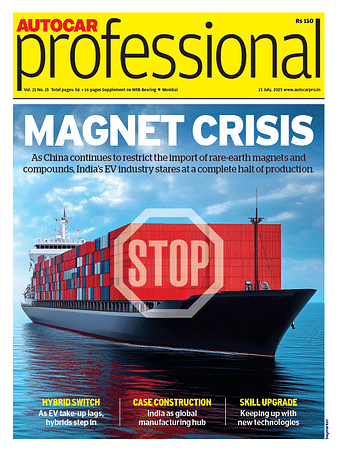Brand building vs selling cars: The cost conundrum at auto shows
Some of the key car makers were conspicuous by their absence. After all, these trade fairs are expensive affairs and many are looking at ways to contain expenses.
The dust has settled on the Auto Expo 2020 in New Delhi and despite apprehensions about an industry-wide slowdown globally, slowing demand for new cars and the economy in doldrums, it recorded a record high footfall. But some of the key carmakers were conspicuous by their absence. After all, these trade fairs are expensive affairs and many are looking at ways to contain expenses.
However, according to apex industry body SIAM, it’s business as usual, notwithstanding. Rajan Wadhera, president, SIAM said: "Cars are very aspirational, so you have a refresh every 18 months and a model change every 5-7 years as opposed to 7-9 years earlier. I would not say that there is any effect of a few people not participating. On the contrary, four Chinese companies have participated."
To some the Auto Expo is no less than a platform to showcase the edge they offer and can help translate adversity into an advantage, as Deepak Jain, president, ACMA reiterates: "The entrepreneurship spirit of the Indian automotive industry is truly what turns disruptions into opportunities. At the Auto Expo Component Show, we saw the convergence of traditional manufacturers getting into electrification and digitisation."
Yes indeed, the spotlight was no doubt on digitisation and future trends. According to Kenichi Ayukawa, MD and CEO, Maruti Suzuki, "A show is very important to encourage the customer. These are good times to show what we are considering for the future, product, and future direction. It’s a good time, but unfortunately some players dropped out this time. We have to check why they decided to give up this time."
The reason they dropped out is an important consideration as pointed out by Santosh Iyer, VP (Sales and Marketing), Mercedes-Benz India, “This also leads to a larger question: Is visitor traffic alone sufficient to justify the huge investment made by the luxury brand?” He further elaborates the point and highlights the crux of the point of concern – “This question becomes more relevant, as such shows act more as brand-building platforms rather than a sales platform like the Bangkok Motor show. The answer to this lies in leveraging the show with a combination of digital engagement with physical touch-points. ‘Physi-digital’ is the new paradigm and increasingly there will be digital penetration in physical showcases of brands,” Iyer added
The automotive world is changing and changing fast. While new entrants in the market could cash in on the brand-building exercise that the Auto Expo is, the dynamics are significantly different for established global brands like Mercedes-Benz. Perhaps Mercedes-Benz India’s Iyer makes the best case for a future direction when he indicates that, “Today’s customer wants ‘Physi-digital’ experience as part of the customer journey and an auto show like the Auto Expo can be a key element in triggering that brand journey.”
RELATED ARTICLES
Cosmo First diversifies into paint protection film and ceramic coatings
The Aurangabad, Maharashtra-based packaging materials supplier is leveraging its competencies in plastic films and speci...
JSW MG Motor India confident of selling 1,000 M9 electric MPVs in first year
The 5.2-metre-long, seven-seater luxury electric MPV, which will be locally assembled at the Halol plant in Gujarat, wil...
Modern Automotives targets 25% CAGR in forged components by FY2031, diversifies into e-3Ws
The Tier-1 component supplier of forged components such as connecting rods, crankshafts, tie-rods, and fork bridges to l...





 By Autocar Professional Bureau
By Autocar Professional Bureau
 25 Feb 2020
25 Feb 2020
 10647 Views
10647 Views









